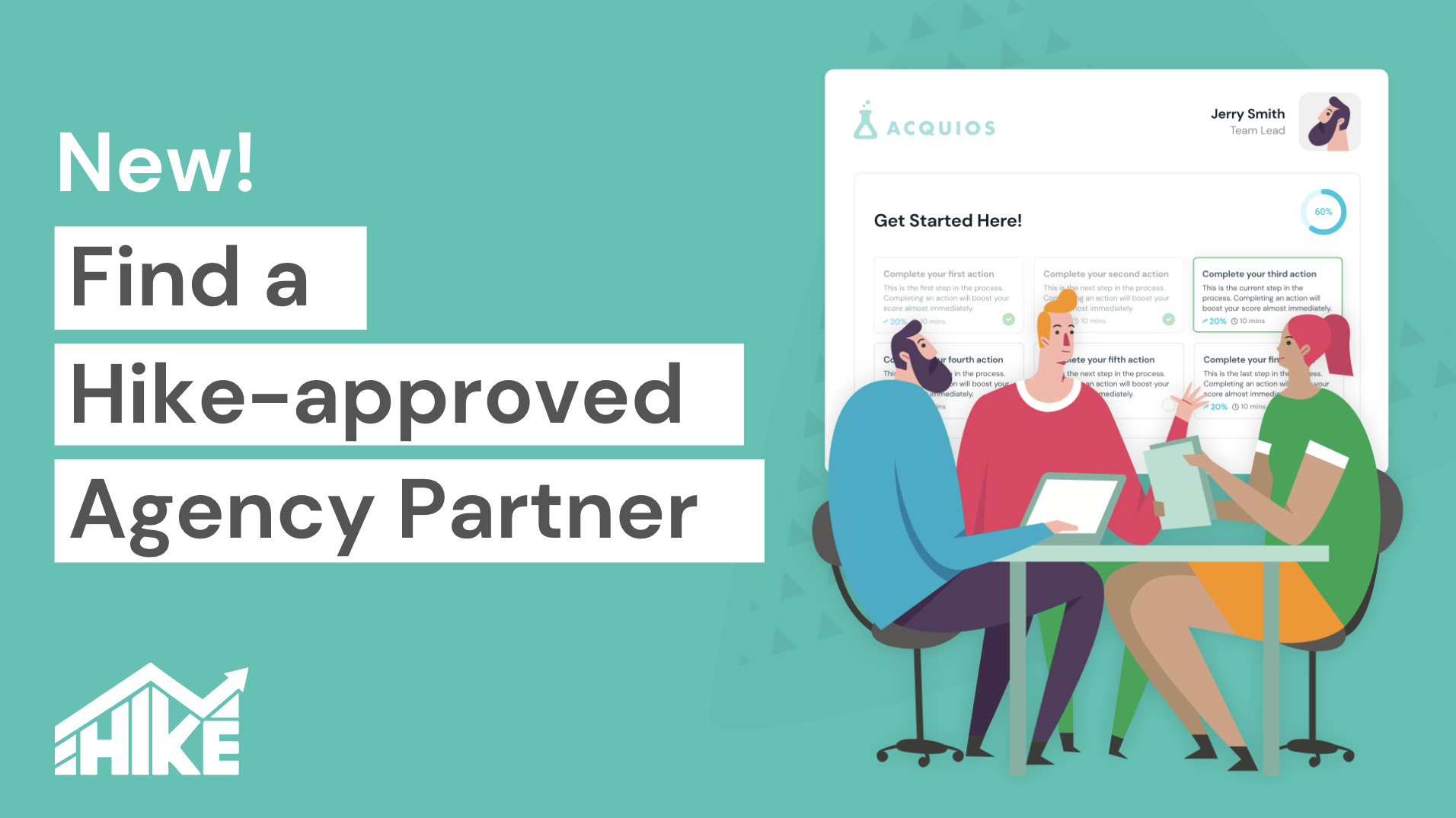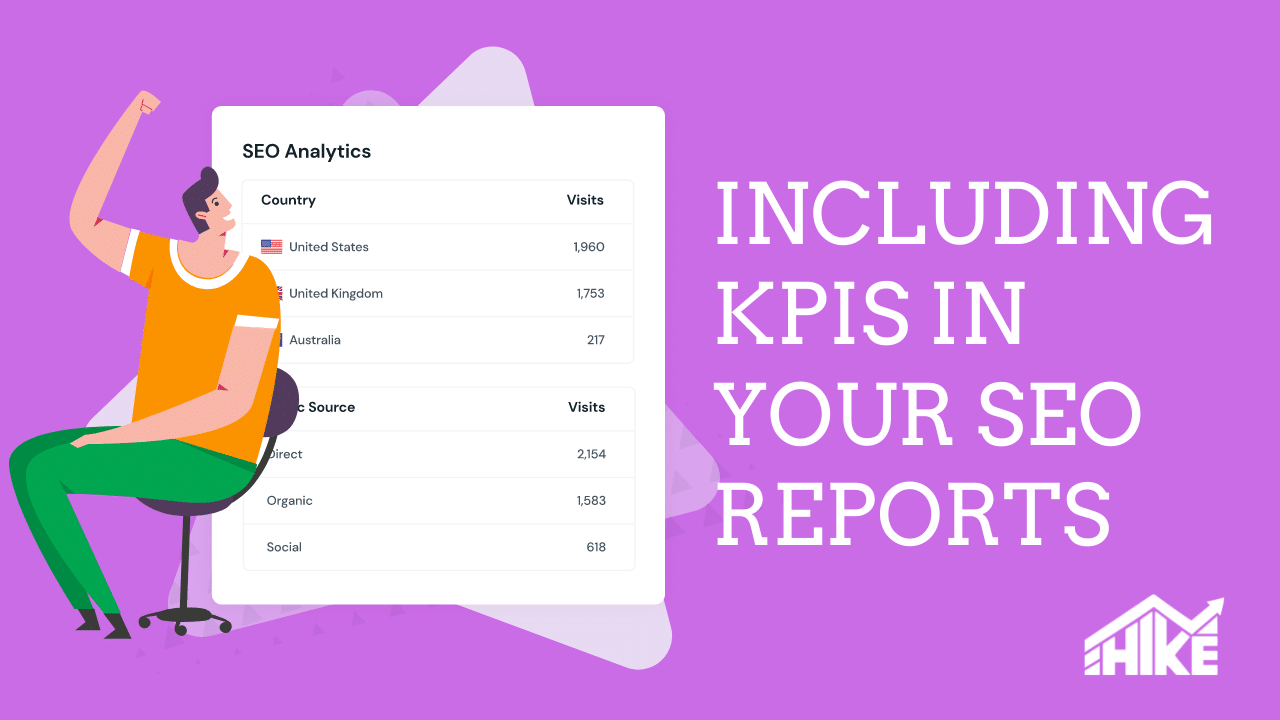Introduction from Hike – this post is the eigth in a series which we’re calling the “Friends of Hike Guest Post Series”. Being a SaaS/marketing company we have friends in lots of different companies, all who expertise in their specialist area. And we want to share their best tips – their best ‘knowledge’ – that can help YOU with your marketing. It’s all about sharing value.
It’s also to demonstrate to our users, and those small businesses/startups, that there are great opportunities for building links to your website if you participate in this ‘expertise sharing economy’. This is exactly what the future of link building looks like, and it’s what Google envisioned as the purpose of links.
Reece Lyons at Treefort who wrote this post has included a backlink to his site. And we are HAPPY to include it, as he is providing true value to our blog and to our users.
So without further ado, enjoy the eight guest post in this series…
They say that sales and marketing are the pillars of a company’s success. I guess we can agree to it to a certain degree. But is that all? Well, I don’t think so. With the rise in customer acquisition costs, sales & marketing hits the glass ceiling after a certain point in time.
So, what’s the answer? How does a business move forward? How does it ensure that it keeps its existing customers while acquiring new ones at the same time?
Enter customer success. How do we define it?
Well, I’ll put this is in simple words. Customer success is a business strategy where we ensure that our product leads to our customer’s success. That’s it. Confused? Making it simpler, it’s the strategy of ensuring that your product helps your customers achieve their desired outcomes.
Customer success is growing really fast. In fact, Hubspot found that growing companies are 21% more likely to implement customer success than their traditional counterparts.

Okay, I believe we are on the same page on the understanding of customer success. But, what does it mean for your business? Why would you even take the time and effort to implement it?
For that, let’s look at the top 5 reasons why a business invests in customer success.
1) Product Loyalty
According to HuffPost, 91% of customers who don’t complain will simply take their business to a competitor. With customer success you can improve product royalty.
By providing exceptional customer service, you can ensure that you customer stays with you for a longer period of time. Huffpost also says that 55% of the customers are willing to pay more for a ‘guaranteed’ good experience. I guess you get the idea!
2) Increase in LTV
LTV or Lifetime Value is probably one metric every software company raves about. The longer the LTV, the more your revenue/customer. Customer success is instrumental in increasing the LTV.
(Editor’s note – LTV is a big factor for us here at Hike. Focussing on small businesses, we have a large customer base, so ensuring we provide enough value over time is key to our growth.)
As you already know, there are essentially 2 ways to increase revenue:
a) Bring in more customers
b) Sell more to the existing ones.
According to StrikeDeck, it’s at least 6-7 times cheaper to sell to existing customers than to acquire a new one. With a well-designed strategy for cross-selling and upselling, you can increase your revenue significantly.
3) Network Effects
It’s obvious but I will point it out any way that every business should focus on their own version of network effects to kick in. Creating brand advocates is one sure-shot way of doing so.
With a customer success strategy in place, you can create brand advocates quite seamlessly. In fact, according to Zuberance, 32% of advocates recommended 10 or more brands.
4) Better Product Adoption
According to Tomar Tunguz, a business with a -5% monthly customer churn rate can add an additional 73% in revenue annually versus one with a 5% monthly customer churn rate.
With a great customer success program in place, your churn is bound to reduce which dramatically increases your revenue. Additionally, if you customer is completely invested in your product, it’s hard for them to switch. This indirectly increases your LTV and brand loyalty.
5) Continuous Feedback
With customer success, a continuous feedback mechanism from your customers is easy to set up.
This also enables you to build the right features for your product – features that your customers actually want and would inculcate the same into their day-to-day operations.
Okay, so we are clear on what is customer success and why a business MUST implement it ASAP (if they haven’t already!).
But if you were to implement a customer success strategy from scratch, what are the best practices you should follow?

No worries! We got you covered.
Here are the top 10 customer success best practices that you should keep in mind while implementing the same.
1) Involve Your Company
Customer success is not a one-man job that can be siloed away. The entire company needs to be aligned to the customer success programs that your company implements. Teams like Customer Support, Product Management & Sales are of paramount importance.
However, the CSM aka the Customer Success Manager is the PoC and manages all back-and-forth communication, team alignments, strategy implementation, etc.
2) Be Present but Don’t Overdo
Customers are busy folks. They don’t have time to loiter around to understand your product. So, be present. Whenever your customer needs help, ensure that they can get to it fast and easy. For example, a simple chat interface within the product can help solve dozens of queries in no time. Alternatively, if you have an exhaustive knowledge base like Pipedrive, you can safely assume that your customers are solving a lot of their problems themselves.
However, don’t overdo it. Don’t ask your customer every alternative day whether they need help or not. That’s a bad gesture and you’re practically wasting their time.
3) Understand Your Customers
You might have heard this before. It’s cliche but a good percentage of companies don’t really understand their customers. They just have an overall idea about them.
Fix? Implement NPS aka Net Promoter Score at every customer touchpoint. This will give you deep insights into the minds of your customer base.
4) Make Your Solutions Personalized: They say that your Customer is the King. Are you treating your King right, eh? Segment your customers into different brackets, understand their needs in the deepest manner possible and design custom solutions to help them scale with your product.

One of the best examples is that of Superhuman. Their onboarding is special. They take each and every customer through their product, answer all their queries and finally hands it over for their customer to experience the powerful email productivity tool.
5) Discover Opportunities
When you are solving your customer’s queries, try to see the bigger picture. What I mean is that it may be just a query or a feature suggestion for them, but it might be a hidden opportunity for you.
At Treefort (a SaaS which helps you create product roadmaps), while we were fixing an embed issue, we came across a use-case (changelog widget) that can easily fit into our offerings. This was a big opportunity for us and we got started on it right away.
6) Communication is Key
This is again a cliched tip but a lot of us get it wrong. The way you communicate with customers can literally determine your product’s future.
According to Intercom, customer communication should be precise, effective and highly authentic.
7) Set Clear Expectations
Yes, this is one of my favourites. More often times than we can remember, we over-promise stuff to our customers for various reasons (like acquisition). This ultimately poses difficult scenarios in the life of a CSM.
Hence, never promise something that you can’t deliver. If you can, make sure you have laid out the conditions in simple terms. For example, Treefort onboarded a bunch of customers who would be using our embed feature ONLY. However, we clearly told that it’s under development and would only be available in a month’s time. And yes, we delivered.
8) Specific Feedback & Customer Loyalty
Pick out the top 5 or 5% of your customers (depending on your customer base’s size) who you think will drive your product to the next level and ask them for feedback on everything – on your product, your processes, the kind of experience they expect, the goals they aim to achieve, etc.
This will not only give you deep insights into your product roadmap but also help you create loyal customers as they get to be an integral part of your product and processes.
9) Use the Right Tools
Don’t mistake it. Customer success is not easy. You would need tools to support you. If you try to implement it by yourself through a manual process, you’d end up wasting a lot of your time and effort. Trust me!
Tools like Gainsight can help you implement customer success strategy at scale. Also, fetching customer data instantly is of paramount importance. That’s why a CRM is mandatory. You could something like a Hubspot Sales Hub or Salesflare to manage your contacts and deals.
10) Hire the Right People
Last but not least, it’s the people who would be doing all of the above. I can’t begin to stress this point enough. When I say ‘right’, I mean it in 2 ways: the right fit and the right number.

You should hire people who are actually driven to help his/her customers succeed. That’s the mindset you’re looking at. For the other part, the rule of thumb is to hire 1 customer success manager for every 40 customers. However, I recommend 1 every 15 customers in your early days. You want all of your customers to feel special and hence extra emphasis should be given.
Bottom line is that you need to understand your customers thoroughly, be present when they need most and have the right strategy to execute customer success at scale.
Author bio: Reece Lyons is CEO and founder at Treefort. With 5+ years of building and scaling SaaS products, Reece’s latest venture puts him right at the center of building the right products which the customers would actually use.



